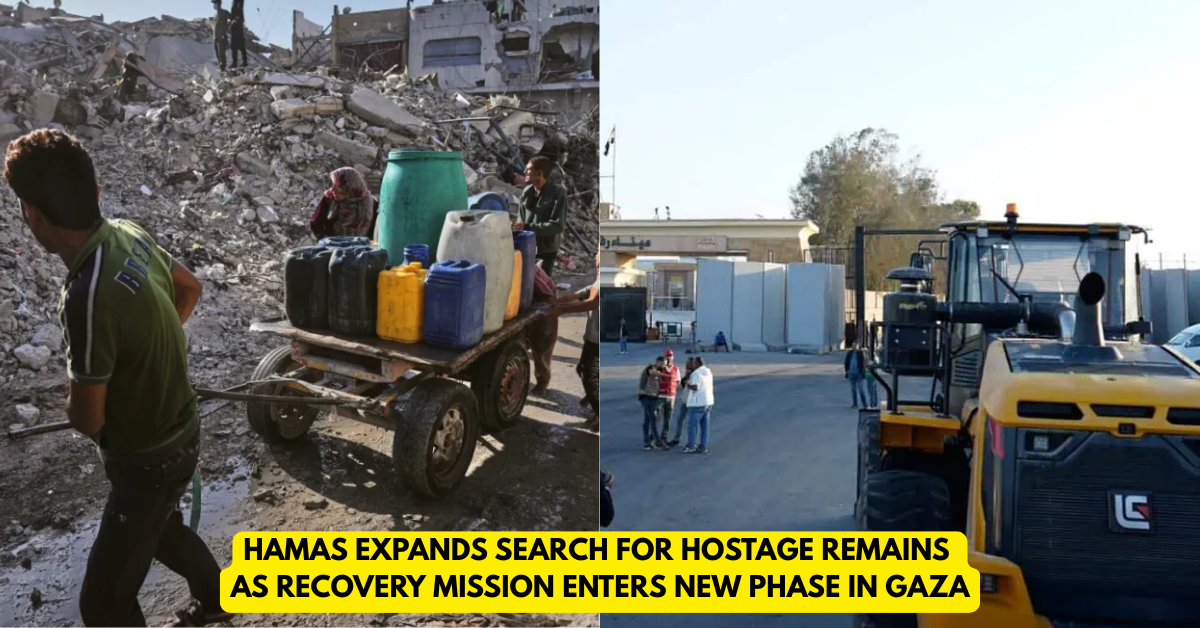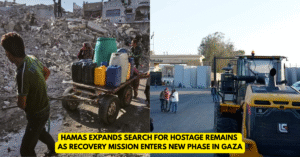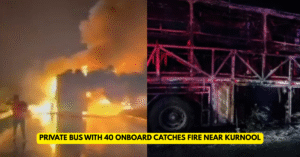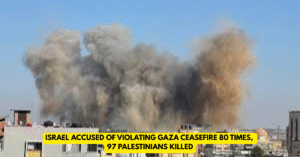Gaza Strip — With the war-torn landscape of Gaza still smouldering, Hamas has announced it is widening its search for the remains of Israeli hostages in the enclave, signalling a new, urgent chapter in the hostage-recovery process tethered to the recent cease-fire.
Under the cease-fire agreement brokered last month, Hamas committed to handing over the bodies of all Israeli hostages. In exchange, Israel agreed to return 15 Palestinian bodies for each Israeli one. But so far, the progress has lagged: though Israel has returned nearly 200 Palestinian bodies, Hamas has only handed over a fraction of what it pledged — and none in recent days.
Heavy Machinery and New Search Zones
In the early hours of Sunday, a coalition of Egyptian engineers and heavy-machinery teams entered Gaza. Bulldozers, excavators and trucks rolled into the fringes of Khan Younis and other badly damaged neighbourhoods, where collapsed homes and piles of debris make recovery efforts slow and dangerous.
Hamas officials said they are now shifting their operation to new sectors of the northern and central Gaza Strip — some previously inaccessible because of ongoing shelling or structural collapse. One Hamas spokesman described the scale of destruction as “massive” and warned that remains may be buried under many metres of rubble.
Families Waiting, Aid Flowing, Tensions High
For the families of hostages, each day feels like an hour. Parents, siblings, children of the abducted continue to live in limbo, the photo on the wall a haunting reminder of a loved one whose fate remains unknown. Some clung to hope; others try to brace for the worst.
Meanwhile, humanitarian convoys and reconstruction equipment are being delivered under the cease-fire deal — but for many the focus remains squarely on what lies ahead: not just aid trucks, but bodies, truth, closure.
The United States, which helped mediate the truce, is watching closely. President Donald Trump warned that failure to make headway on the bodies exchange could jeopardise the fragile agreement and provoke renewed military action.
Why This Matters
This phase is more than humanitarian; it’s symbolic. Recovering the bodies is a test of trust, of real change, of whether the cease-fire can deliver more than a pause in fighting. For Israel, the return of the remains is emotionally, politically and morally significant. For Hamas and Gaza’s population, the ability to search and retrieve signifies some control and agency in their shattered land.
But risks persist. Israeli military operations in Gaza continue, and Palestinian officials say renewed strikes in places like Nuseirat have disrupted search zones and raised fears of further breakdown in the deal.
What Comes Next
Search teams are working against time and landscape. The terrain is unforgiving: craters, collapsed tunnels, destroyed civilian infrastructure — all make recovery slow and perilous. The coming days will be critical.
If the remains are returned in numbers, momentum behind the cease-fire may strengthen and reconstruction may gain focus. If they are not, tensions could flare again, setting back every effort toward peace. Families, witnessing the aftermath firsthand, are inevitably the watchers of this moment — hopeful, anxious, waiting.








